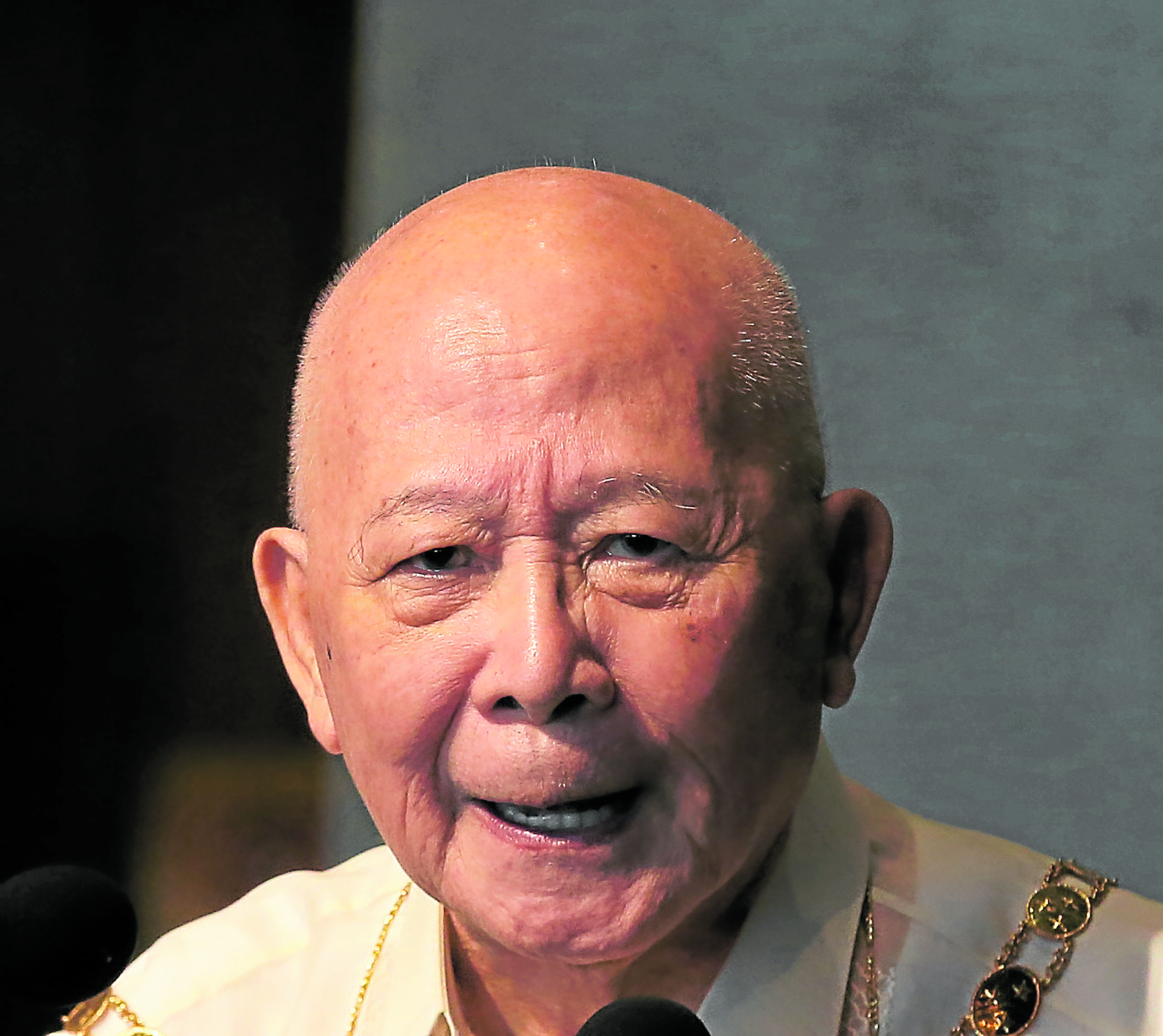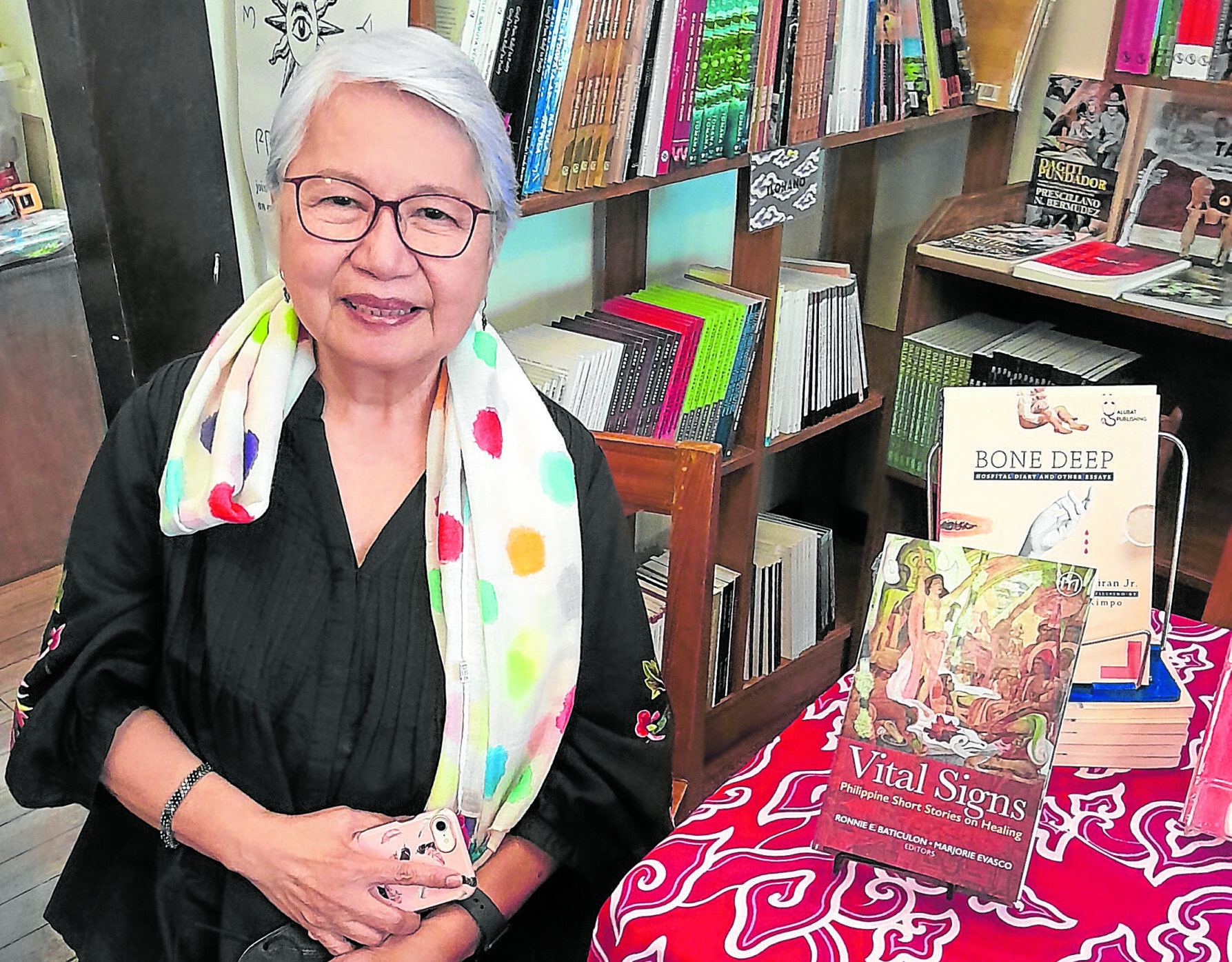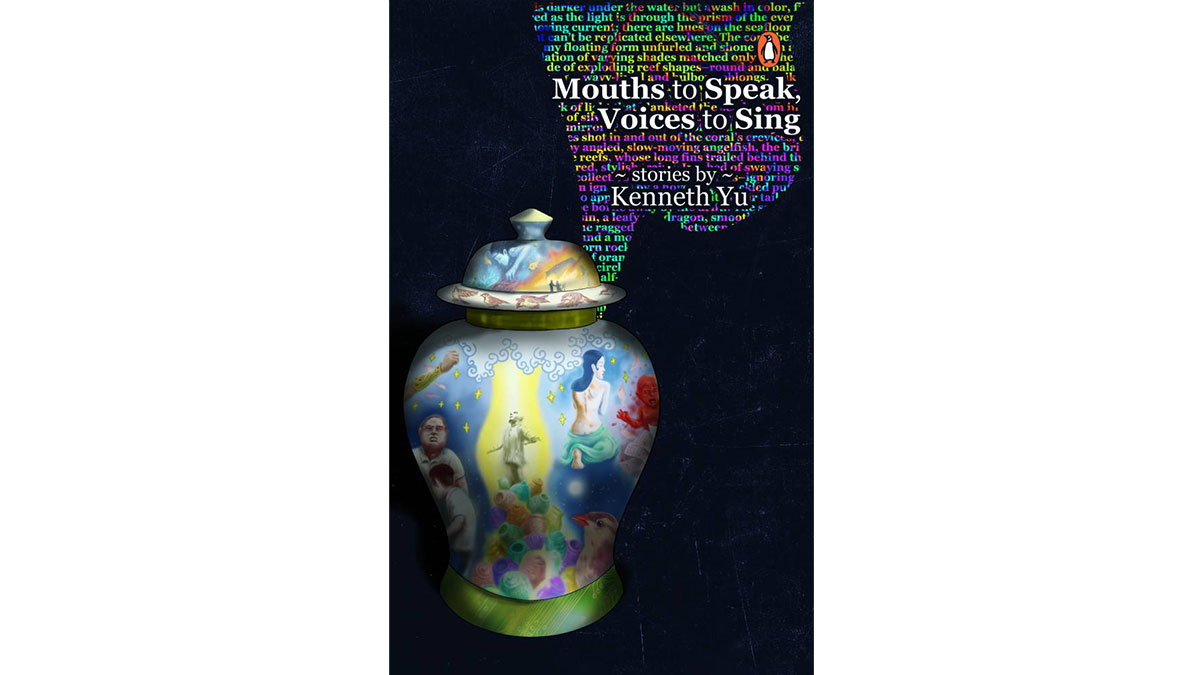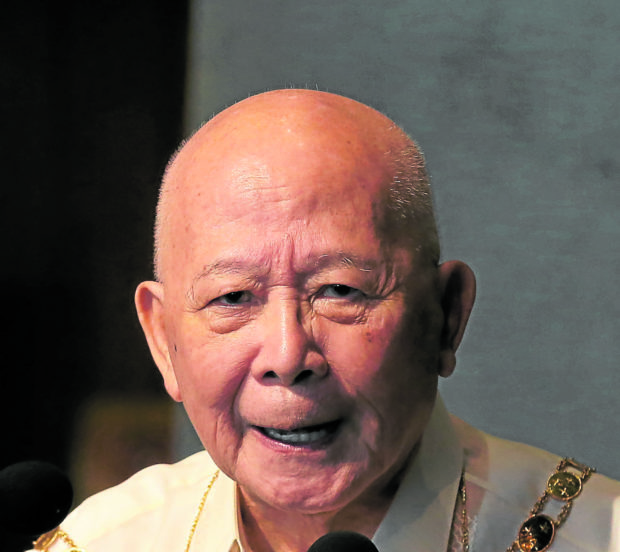
In 2000, at the beginning of the new century and the third millennium, I put Bienvenido L. Lumbera in trouble. At the annual Carlos Palanca literary awards ceremonies at Peninsula Manila in September, I interviewed him for an assignment for the Sunday Inquirer Magazine on the rather bombastic topic of “the future of Philippine literature.”
It was the frantic era of “futuristics.” “Futurists,” in the run-up to the new century, stoked the fires of panic when they raised the specter of doomsday as a result of the millennial bug supposedly wreaking havoc on an increasingly wired world. But when the clock finally ticked 2000, nothing went haywire. Apocalypse averted.
Still, it would be good to probe the future. At the beginning of the preceding century itself, Italy had come up with futurism in order to capture in their arts and designs the dynamism and energy of the modern world. There was a parallel movement in Russia. Futurism gave rise to kindred art and design movements embracing the future—Art Deco, constructivism, surrealism, Dadaism.
At the turn of the 21st century, the Palanca itself came up with a new category—Future Fiction. I chaired the three-person jury and was caught between a rock and a hard place when my cojurors, bull-headed critics Soledad S. Reyes and Isagani R. Cruz, locked horns over the latter’s insistence that for entries to be considered for a prize, they should be “futuristic” not only in content but also in form. Reyes found his criterion delimiting, and their vehement disagreement perfectly ruined my anticipation of a delicious lunch and convivial conversation.
Frazzled by millennial panic and scarred by critics’ wars, I dived into my magazine assignment with gusto, since interviewing Lumbera would be a relaxing engagement with Mister Congeniality himself. Not for nothing was his name the Spanish word for “welcome.”
Like an oracle
And Lumbera intoned his auguries like an oracle pretty much at home with the future he was painting. Philippine literature in the future, he said, “will be multilingual and multicultural; all literatures we call regional will be incorporated in what people will call a National Literature.” There is really nothing controversial there. But further on, he gave remarks about the future of Philippine writing in English. As the remarks finally appeared in the magazine on Oct. 1, 2000, they seemed to have hit a raw nerve:
“Literature in English, according to Lumbera, will survive despite the palpable deterioration of the quality of English of Filipinos in general. ‘The really good writers will continue to be there,’ he says, ‘but the weight appears to have shifted to Fil-American writers who ‘will be there to influence the locals.’”
The remark might have proved wounding to Philippine writers in English, but my account of the interview might have rubbed salt in the wound when I quoted Lumbera on the audience of the English writers.
“The Filipino writer in English has to go to the West because ‘his biggest problem is that he has no readers here,’ Lumbera says,” I wrote. Philippine writing in English, I further reported, “is also filled with ‘literary writers,’ or the pure aesthetes, who are not appreciated by the local audience. ‘Literariness’ is not part of the tradition of the readers [of the more sophisticated and polished writers in English],’ he explains. ‘Their style—their ‘fine art’—is not familiar to the broader audience.’”
The remarks—or my reporting of them—might have sounded dismissive of English writers, which was not really the case, since as everyone who knows him would attest, Lumbera was very judicious and measured in his remarks.
But just the same, they raised some hackles, notably of another titan of letters, Gregorio Brillantes. In a series of highly polemical essays in Philippines Graphic, which he was editing, Brillantes criticized Lumbera for what he perceived to be the latter’s rather dire prognosis of Philippine English writing.
Lumbera would later tease me that I had gotten him in trouble. But he admitted he hadn’t expected his remarks would have such a waspish reception.
Years later, something of the same testiness greeted his induction into the Order of National Artists in 2006. Alfred “Krip” Yuson, in his newspaper column, denounced his election over Cirilo Bautista, describing him as “the communist candidate” and “a second-tier citizen of the republic of letters.”
Four years later, in 2010, when delivering the keynote in the Palanca Awards ceremonies, Brillantes defended English writing against the alleged campaign by nationalist critics such as Lumbera and E. San Juan, who purportedly wanted to “de-English” Philippine literature and depicted English writers as part of the “power elite.”
“[P]lease don’t call them the power elite,” Brillantes said, “make that pawis sulit … they are a breed far distinct and apart from any sociopolitical class. A generation of the illustrious laboring in the vineyard of the Enlightenment …”
He added: “To achieve and witness all that, we need not wait for the advent of the Filipino Utopia that some of us seem still to fantasize about and even fulminate on—an absolutely, exclusively Filipino society and culture with only one language and only one literature and only one party forever and ever, so help us God.”

Luminous and illuminating
Lest I now get Brillantes into trouble for making him sound as though he were associating “Enlightenment” solely with Philippine writing in English, I must report that he likewise remarked, “Let us have more ilustrados in our literature—luminous and illuminating in the creative sense—light bringers of the Filipino imagination—in Filinglish, Tagalog, Ilocano, Bicol, Cebuano, Bisaya, Hiligaynon.”
But this remark should reflect on the achievement of Lumbera, which was nothing less than colossal. The headline I used for my Sunday Inquirer Magazine article had heralded this: “The Babel Unified.”
Back in the late 1960s, when Lumbera started publishing in a local academic journal the chapters of his dissertation for the Ph.D. Comparative Literature degree he obtained at Indiana University (“Tradition and Influences in the Development of Tagalog Poetry”), no one could have predicted the impact that it would have on Philippine literature and culture.
According to Lumbera, the opus had initially sought to study vanguard Tagalog poet-critic Alejandro Abadilla’s contention that “traditional” poetry, “of which [Francisco] Baltazar’s ‘Florante at Laura’ was the high point, had in the 20th century blighted the growth of genuine modern poetry in Tagalog.”
Of course the final work turned out to be different. “I wanted to pursue Abadilla’s thesis,” Lumbera later wrote, “and in seeking out the root cause of what he supposed a malaise, I found myself reconstructing the early history of Tagalog poetry.”
His work therefore didn’t tackle Tagalog poetry in the 20th century, but how it had come to be so. And since Tagalog poetry was supposed to have reached its peak in the poetry of Baltazar, he sought to study the “genealogy” or the tradition that had formed and molded it.
The study of Baltazar worked in Lumbera’s favor, since while the poet from Panginay, Bigaa, and Orion, Bataan, is said to have been prolific, writing hundreds of works much like the “Monstruo de la Naturaleza” Lope de Vega, the vicissitudes of history and the elements have left posterity with only three extant works: aside from the awit or metrical romance “Florante at Laura,” there are the dramatic works “Orosman at Zafira” (a fabulous and shockingly quite realistic moro-moro or komedya), and “La India Elegante y Negrito Amante” (a caustic social satire).
It’s incredible that the tradition of “Balagtasismo” had been built on such a woefully thin inventory, but most probably it is because of this that Tagalog scholars, especially during the American era, had rushed to retrieve and conserve them.
But Lumbera didn’t just do a rush job. His study helped consolidate the canonicity of “Florante at Laura,” albeit via the formalist “New Criticism” mode. “What I had hoped to do for the classic was to establish its integrity as a literary work and to restore it to its proper historical context so that Baltazar could be rescued from the uncomprehending appreciation, and also ignorant vituperation, into which he fell when he was enshrined in textbooks as ‘The Great National Poet of the Philippines.’”
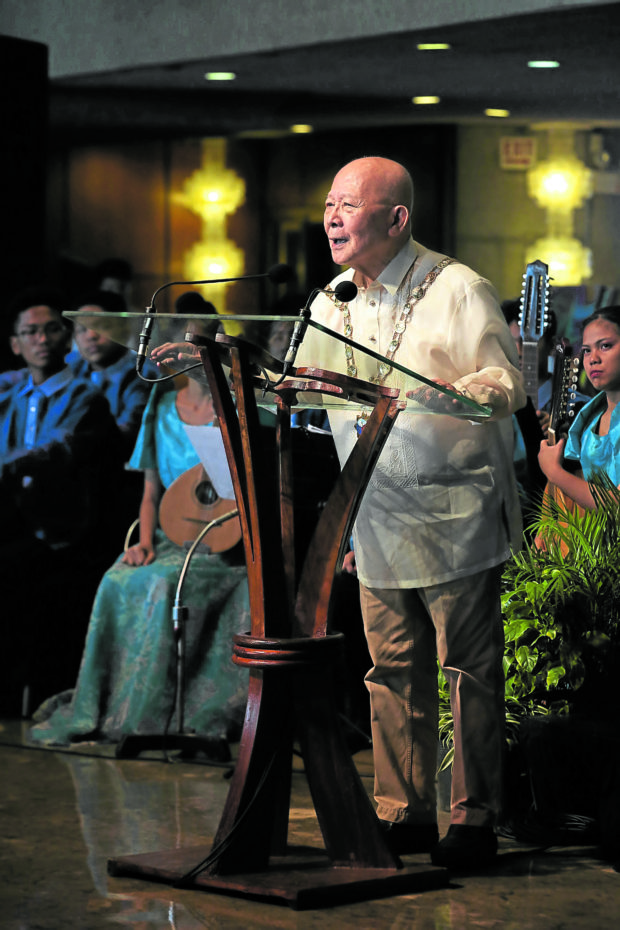
in 2019.
Literary merit
The conceit here is that by validating the national laureateship of Baltazar, Lumbera was able, adventitiously, to attach his name to that of the Bard of Bataan, much like what Epifanio de los Santos (Edsa) did when he translated “Florante at Laura” in Spanish during the American era, which became the basis for the English translation by George St. Clair. This is not to say that Lumbera and Edsa were riding on the coattails of Baltazar. To be sure, their scholarship firmed up his place in national—and world—literature.
By applying formalist criteria on the Tagalog poetry, Lumbera was able to establish its literary merit. He was somewhat apologetic about this later: “I admit that in 1965, when I began work on my thesis, my critical roots were in the New Criticism which I had absorbed while doing graduate work,” he wrote in the book’s prologue.
But he asserted just the same that his analysis of “Florante at Laura” was “the first detailed reading” of the poem that would serve to correct “many well-intentioned, but unfortunately invariably ill-informed interpretations” of the classic.
“While I would wish I had demonstrated the dynamic interplay between the text and its sociohistorical context,” he added, “I continue to think that what I had done with Baltazar’s poem was necessary in establishing its artistic worth.”
With his fine scholarship, Lumbera enabled Tagalog studies to graduate to Philippine studies. And with his teaching and his authorship of such textbooks as “Philippine Literature: A History & Anthology” (1982, National Bookstore), Lumbera helped spread the gospel of Philippine studies. Many of his graduate students have followed his example of investigating the vernacular tradition and become scholars in their own right; they now head the literature or Philippine studies departments of their schools.
Perhaps because we were friends, alumni of the University of Santo Tomas (he was from Philosophy and Letters or Philets in the 1950s, I from Arts and Letters in the 1980s) and the school organ Varsitarian, and critics both, I could tell him my disagreement with certain aspects of his studies.
I told him that his “Tagalog Poetry” made short shrift of the poetry written during the Spanish period that covered almost four centuries. “You yourself said in the book that your treatment was ‘deprecatory,’” I told him. In effect, the Spanish influence on the formation of the “Tagalog tradition” in poetry was ignored, even dismissed.
Even the venerable E. Arsenio Manuel had pointed out to Lumbera, as the latter admitted in the prologue to “Tagalog Poetry,” that native prosody, such as the Mangyan ambahan and the Tagalog tanaga, might have “emerged during the period of Spanish colonialism, a product of the interaction between native and Spanish poetry.”
Moreover, especially after he joined the communist underground at the turn of the 1970s, his espousal of “nationalist literature” served to relegate further the literature written under Spanish colonialism, and ignore Spanish Philippine literature, which may present a very distorted history of Philippine literature. To be sure, the first thoroughly nationalist works, no less than Rizal’s novels and poems, were written in Spanish.
Lumbera clearly ascribed their writing not necessarily to the Spanish influence, but to global currents, such as the opening of the Suez Canal in 1869. As he wrote in his essay, “Nationalist Literary Tradition,” in “Revaluation 1997”: “The last 30 years of the 19th century—more than 300 years after the advent of Spanish colonialism—witnessed the stirrings of a new consciousness [among] urbanized inhabitants of the Philippines …” But this should situate the achievements of the Proganda Movement and the first nationalists to the “Enlightenment,” much like Brillantes’ “ilustrados”—“A generation of the illustrious laboring in the vineyard of the Enlightenment …” Strange bedfellows, these two.
Lumbera himself had said he started as a writer in English and didn’t enroll in an elective course on Philippine literature in UST because “I felt it wasn’t interesting enough.” But after meeting Abadilla, the father of modern Tagalog poetry, and experimenting in Tagalog verses with his Ateneo cofaculty and co-Philets alumnus Rolando Tinio, he started earnestly to write in the vernacular. His “de-Englishization” had started, and there was no turning back.
Or was it? Checking the Varsitarian archives and looking at very old issues when Lumbera was assistant literary editor, I discovered a poem he wrote—in Tagalog!
Tawag
Ang lambong ng ulap sa
mukha ng langit
ngayong gabi’y kay itim
patay na ang siga ng mga
bituin
ang maputlang ningas ng
buwan.
Mga punong niyog sa
dalampasigan
ay mga talibang
nangagwawasiwas
ng nagbabalang hudyat
habang umaawit na
tila baliw
ang hangin.
Ayaw, ayaw ko pang
lumisan…
Ngunit taas na ang layag
handa na ang lunday
na aking sasakyan.
Sa guhit-tagpuan ng langit
at dagat
ay may kumakaway—
tinatawag ako…
O ayaw maghintay!
The poem was published in the Sept. 15, 1953, edition of the Varsitarian. It somehow prefigured Lumbera coming into his own person, mastering his own speech. Even then he was practicing his own brand of futurism. His was a poet’s probing of what might lie ahead, painting the colors of the future, exploring the reaches of mortality. —CONTRIBUTED

